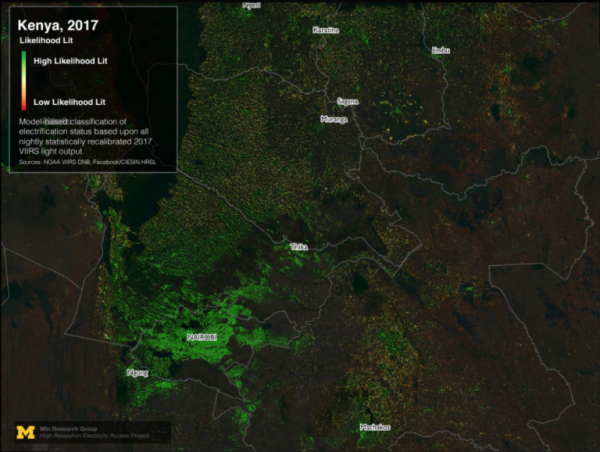How can technology services like high-performance computing and storage help a political scientist contribute to more equal access to electricity around the world?
Brian Min, associate professor of political science and research associate professor with the Center for Political Studies, and lead researcher Zachary O’Keeffe have been using nightly satellite imagery to generate new indicators of electricity access and reliability across the world as part of the High-Resolution Electricity Access (HREA) project.

The collection of satellite imagery is unique in its temporal and spatial coverage. For more than three decades, images have captured nighttime light output over every corner of the globe, every single night. By studying small variations in light output over time, the goal is to identify patterns and anomalies to determine if an area is electrified, when it got electrified, and when the power is out. This work yields the highest resolution estimates of energy access and reliability anywhere in the world.
LSA Technology Services and ARC both worked closely with Min’s team to relieve pain points and design highly-optimized, automated workflows. Mark Champe, application programmer/analyst senior, LSA Technology Services, explained that, “a big part of the story here is finding useful information in datasets that were created and collected for other purposes. Dr. Min is able to ask these questions because the images were previously captured, and then it becomes the very large task of finding a tiny signal in a huge dataset.”
There are more than 250 terabytes of satellite imagery and data, across more than 3 million files. And with each passing night, the collection continues to grow. Previously, the images were not easily accessible because they were archived in deep storage in multiple locations. ARC provides processing and storage at a single place, an important feature for cohesive and timely research.
The research team created computational models that run on the Great Lakes High-Performance Computing Cluster, and that can be easily replicated and validated. They archive the files on the Locker Large-File Storage service.
One challenge Min and O’Keeffe chronically face is data management. Images can be hundreds of megabytes each, so just moving files from the storage service to the high-performance computing cluster can be challenging, let alone finding the right storage service. Using Turbo Research Storage and Globus File Transfer, Min and O’Keeffe found secure, fast, and reliable solutions to easily manage their large, high-resolution files.
Brock Palen, director of ARC, said that top speeds were reached when moving files from Great Lakes to Turbo at 1,400 megabytes per second.
